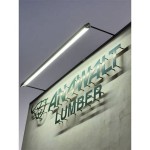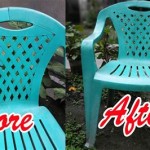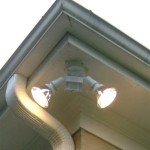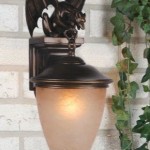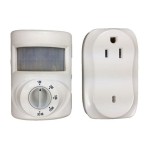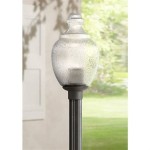CIBSE Outdoor Lighting Guide: A Comprehensive Overview
The Chartered Institution of Building Services Engineers (CIBSE) Outdoor Lighting Guide is a cornerstone resource for professionals involved in the design, installation, and maintenance of exterior lighting systems. This guide provides detailed recommendations and best practices aimed at achieving effective and efficient outdoor lighting while minimizing negative impacts on the environment and the surrounding community. It addresses a wide range of applications, from residential areas and roadways to industrial facilities and public spaces. This article will delve into key aspects of the CIBSE Outdoor Lighting Guide and highlight its importance in creating safe, sustainable, and aesthetically pleasing outdoor environments.The CIBSE Outdoor Lighting Guide emphasizes a holistic approach, considering not only the illuminance levels required for specific tasks but also factors such as glare control, light pollution reduction, energy efficiency, and the impact on wildlife. The guide is regularly updated to reflect advancements in lighting technology and evolving best practices in sustainable design. Its adherence is often incorporated into planning regulations and building codes, underscoring its significance in ensuring responsible outdoor lighting design.
Effective outdoor lighting plays a crucial role in enhancing safety and security. Well-lit environments deter crime, improve visibility for pedestrians and motorists, and reduce the risk of accidents. However, excessive or poorly designed lighting can have detrimental effects, including sky glow, light trespass, and disruption of nocturnal ecosystems. The CIBSE guide provides the technical framework to balance these competing needs, promoting lighting solutions that are both functional and environmentally conscious.
The guide is organized into sections covering various aspects of outdoor lighting, including: lighting design principles, specific application guidelines, equipment selection, installation and commissioning, maintenance, and relevant legislation and standards. It offers practical advice supported by technical data and case studies, making it an indispensable tool for lighting designers, engineers, architects, and facility managers.
Understanding Fundamental Lighting Design Principles
The CIBSE Outdoor Lighting Guide begins by establishing fundamental lighting design principles. These principles serve as the foundation for making informed decisions throughout the lighting design process. One key principle is the definition of visual tasks. Understanding the specific activities that will take place in the illuminated area is paramount. For instance, the lighting requirements for a pedestrian walkway will differ considerably from those for a high-speed roadway or a security-sensitive area.
Another crucial principle is the concept of layered lighting. Instead of relying on a single, uniform level of illumination, layered lighting involves creating a hierarchy of light levels to highlight key areas, improve visual perception, and reduce glare. This approach typically involves combining ambient lighting, task lighting, and accent lighting to achieve a balanced and visually comfortable environment.
Glare control is another fundamental principle addressed in the guide. Glare occurs when excessive light enters the eye, reducing visibility and causing discomfort. The guide provides guidance on selecting luminaires with appropriate light distributions and aiming angles to minimize glare. It also emphasizes the importance of considering the reflective properties of surfaces when designing outdoor lighting schemes.
The CIBSE guide stresses the importance of considering colour rendering. Colour rendering refers to the luminaire's ability to accurately reproduce the colours of objects. A high colour rendering index (CRI) is desirable in applications where accurate colour perception is important, such as retail displays, landscaping, or areas where safety relies on distinguishing between colours. The guide provides recommendations for selecting luminaires with appropriate CRI values for different outdoor applications.
Finally, the guide advocates for a focus on uniformity. Uniformity refers to the consistency of light levels across the illuminated area. While perfectly uniform lighting is not always desirable, significant variations in light levels can create shadows and dark spots, which can compromise safety and security. The guide provides recommendations for achieving acceptable uniformity ratios in different outdoor environments.
Specific Application Guidelines and Recommendations
A significant portion of the CIBSE Outdoor Lighting Guide is dedicated to providing specific application guidelines and recommendations for various outdoor environments. These guidelines take into account the unique characteristics and requirements of each application, ensuring that the lighting design is tailored to the specific needs of the space.
For roadways and highways, the guide provides detailed recommendations for illuminance levels, uniformity, and glare control to ensure the safety of motorists, cyclists, and pedestrians. It addresses different road classifications, traffic volumes, and speed limits, offering tailored lighting solutions for each scenario. It also covers the lighting of intersections, pedestrian crossings, and roundabouts, highlighting the importance of clear visibility and driver awareness.
In residential areas, the guide emphasizes the importance of minimizing light pollution and light trespass. It recommends using shielded luminaires that direct light downwards, reducing the amount of light that escapes into the sky or spills onto adjacent properties. It also advocates for the use of lower illuminance levels and motion sensors to reduce energy consumption and minimize the impact on nocturnal wildlife.
For public spaces such as parks, plazas, and pedestrian walkways, the guide stresses the importance of creating a safe and welcoming environment. It recommends using a combination of ambient lighting and task lighting to highlight key features and improve visual perception. It also emphasizes the importance of selecting luminaires that are aesthetically pleasing and complement the surrounding architecture.
Industrial facilities and car parks require specialized lighting solutions to ensure the safety and security of workers and visitors. The guide provides recommendations for illuminance levels, uniformity, and glare control in these environments. It also addresses the specific lighting requirements for areas with hazardous materials or equipment, ensuring compliance with relevant safety regulations.
Sports facilities, both recreational and professional, have unique lighting needs to ensure fair play, spectator visibility, and player safety. The CIBSE guide addresses requirements for horizontal and vertical illuminance, glare control, and colour rendering depending on the sport played and level of competition. It also considers the impacts of lighting on surrounding areas and provides guidance on minimizing light trespass to nearby residences.
Moreover, the guide dedicates a section to tunnel lighting, highlighting the importance of luminance adaptation and gradual transitions in light levels at tunnel entrances and exits to ensure safe and comfortable passage for motorists. It covers requirements for both daytime and nighttime conditions, as well as emergency lighting systems.
Sustainability and Energy Efficiency in Outdoor Lighting
The CIBSE Outdoor Lighting Guide places a strong emphasis on sustainability and energy efficiency. It recognizes the environmental impact of outdoor lighting and provides guidance on minimizing energy consumption while maintaining adequate illumination levels and visual comfort.
One key strategy for improving energy efficiency is the use of advanced lighting controls. These controls can automatically adjust light levels based on occupancy, time of day, or ambient light levels. Motion sensors can be used to turn on lights only when needed, while dimming systems can reduce light output during periods of low activity. The guide provides recommendations for selecting and implementing appropriate lighting controls for different outdoor applications.
Another important factor is the selection of energy-efficient light sources. The guide advocates for the use of LED (light-emitting diode) technology, which offers significant energy savings compared to traditional light sources such as high-pressure sodium (HPS) and metal halide. LEDs also have a longer lifespan, reducing maintenance costs and minimizing waste.
The guide also recommends optimizing the lighting design to minimize the amount of light needed. This can be achieved by using shielded luminaires to direct light only where it is needed, avoiding over-illumination, and considering the reflective properties of surfaces. By carefully designing the lighting system, it is possible to achieve adequate illumination levels with minimal energy consumption.
The CIBSE guide encourages designers to consider the lifecycle cost of lighting systems. This includes not only the initial purchase price but also the cost of energy, maintenance, and replacement. By considering the long-term costs, it is often possible to justify the investment in more energy-efficient lighting technologies.
In addition to energy efficiency, the guide also addresses other aspects of sustainability, such as the use of environmentally friendly materials, the reduction of light pollution, and the protection of nocturnal wildlife. It recommends selecting luminaires that are made from recyclable materials and avoiding the use of hazardous substances. It also provides guidance on minimizing light trespass and reducing the impact of lighting on bats, birds, and other nocturnal animals.
The CIBSE Outdoor Lighting Guide is an essential document for anyone involved in the design, installation, and maintenance of outdoor lighting systems. It provides a comprehensive framework for creating safe, efficient, and sustainable outdoor environments. By following the recommendations in the guide, professionals can ensure that their lighting designs meet the needs of the community while minimizing negative impacts on the environment.

Brief Guide To Lighting Levels

The Cibse Recommended Lighting Levels Developed From 7 Table

Cibse Lighting Guide Lg6 1992 The Outdoor Environment Unknown Author 9780900953538 Abebooks

A Guide To School Lighting Levels

Module 194 Evaluating Lighting Needs For Educational Facilities Cibse Journal

Cibse Lighting Guide Lg6 1992 Quot The Outdoor
Lighting Guide 6 The Exterior Environment
Guide A Environmental Design

Conquering Outer Space Best Practice In Exterior Lighting Cibse Journal

Cibse Code K Electricity In Buildings
Related Posts
